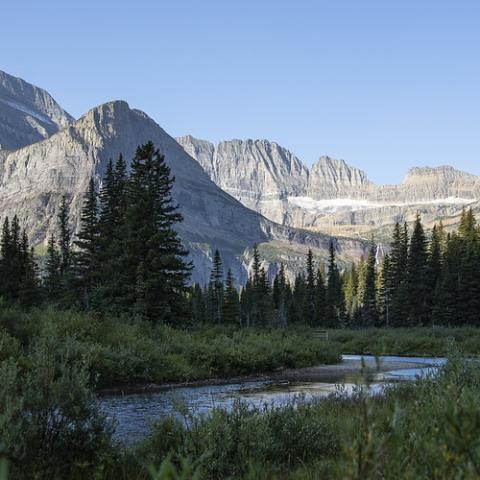
A plan has been developed in a bid to reduce grizzly-train collisions in Montana near Glacier National Park/NPS file
Grizzly-train collisions that have killed 75 bears between 1975 and 2023 have led to a plan aimed at reducing the deaths, some of which have occurred on the doorstep to Glacier National Park in Montana.
The BNSF Railway Co. operates 206 miles of railway in key grizzly habitat known as the Northern Continental Divide Ecosystem (NCDE), crossing multiple national forests and along the southern border of Glacier. Bears are drawn to the tracks by carrion or grains spilled by passing trains.
In 2023 three bears were killed, prompting a number of conservation groups to sue BNSF for not having an approved plan and "incidental take" permit that would allow for a specific number of grizzly deaths. The grizzly deaths came during a years-long effort by BNSF to develop a habitat conservation plan that would include mitigation measures and obtain an incidental take permit.
The plan reached between the U.S. Fish and Wildlife Service and BNSF calls for the railroad to use a “rapid response protocol” to quickly remove any grain spills or carrion; inspect grain cars for leaks and set out any leaking cars; manage vegetation in the right-of-way to reduce attractants; and fund fencing to prevent livestock from accessing sections of the railbed.
The railroad also agreed to fund three grizzly technicians to reduce human/grizzly conflicts throughout the NCDE. The plan is to remain in effect for seven years, irrespective of whether the Trump administration strips grizzly bears of Endangered Species Act protections.
“We are encouraged BNSF seeks to prevent its trains from killing more grizzlies,” Pete Frost, attorney at the Western Environmental Law Center, which brought the 2023 lawsuit along with Western Watersheds Project, and Wildlife Guardians, said Thursday.
In 2022, 1,138 grizzlies inhabited the Northern Continental Divide recovery zone, according to the groups. On average, 29-34 freight trains and two Amtrak trains operate on the railway through the NCDE every 24 hours. Under the new permit, trains may take 19 grizzlies, including nine females, within the seven-year period.
“The BNSF railway runs right alongside Glacier National Park, some of the most prime grizzly habitat in the world, so we are hopeful risks to grizzlies will be lessened,” said Erik Molvar of Western Watersheds Project. "We are disappointed, however, that speed reductions aren't part of BNSF's conservation package. The railroad slows down for human safety, and ought to do that for grizzly safety as well."




 Support Essential Coverage of Essential Places
Support Essential Coverage of Essential Places






